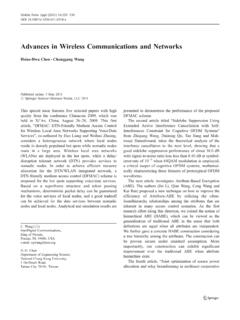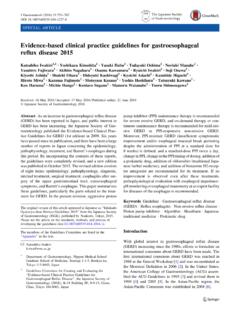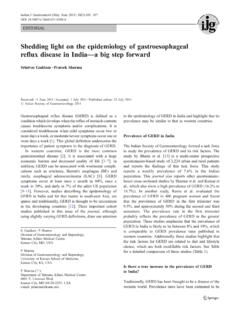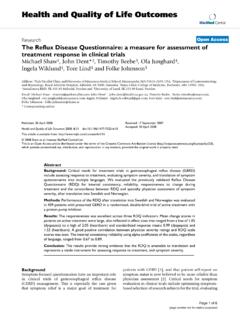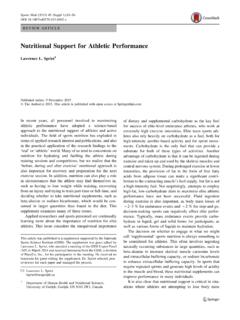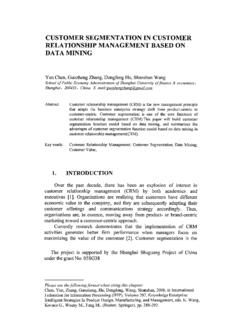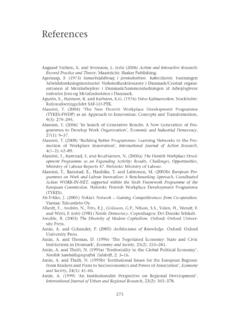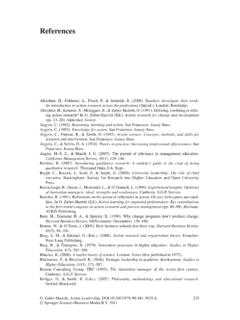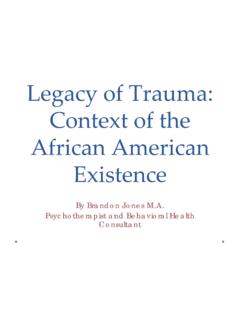Transcription of Introduction to Part I: Trauma Theory
1 PA RT I Introduction to Part I: Trau ma T heor yIn 1896, Sigmund Freud presented a new Theory concerning the cause of hysteria in his female patients. What came to be called the seduction Theory posited that the source of his patients unusual behavior including mutism, feelings of being choked, and seizures was sexual The details of his Theory , oddly, changed over the years, although what is undisputed was both Freud s belief in its icy reception and his subsequent recantation of the Theory (Freud, Complete Letters 184). The oddities include the changing accounts of who perpetrated the attacks on these women and whether or not the women revealed the Trauma to Freud or whether he simply deduced that sexual Trauma What is also unclear is precisely why Freud, within seventeen months of presenting his Theory , recanted it.
2 He provides three reasons in an 1897 letter to a colleague and different critics have emphasized each point in turn, depending on their critical Feminist critics have honed in on his second reason, in which he stated that should incest and rape of young girls be the cause of their hysteria, then instances of abuse would far outweigh cases in which women reacted hysterically and, therefore, the problem would be so widespread as to be prominent and noticeable. Determining that this situation was improbable, he did more than revise his Theory under pressure from its poor reception he rejected it Herman claims that Freud discovered these traumatic crimes and recoiled in terror. She suggests as well that pressure from the Viennese bourgeoisie was such that both his practice and his reputa-tion were threatened. Jeffrey Masson s Theory is equally cynical, but more detailed.
3 He describes the circumstance of Freud s colleague, Wilhelm Fliess, who left gauze in the torso of a woman (Emma) upon whom he was performing surgery, causing her incredible pain. More so, the patient began to exhibit reactions similar to Freud s other 2 READINGS OF Trauma , MADNESS, AND THE BODY hysterical patients. Masson said Freud felt forced to choose between his Theory of traumatic crimes causing hysterical behavior and the evidence of Emma s hysteria being caused by surgical error (Steele 224).Whatever the cause of his recantation, the outcome was the same. Freud backed away from examining the source of his patients Trauma and turned his focus toward developing theories of sexual develop-ment. Freud s repudiation of this Theory went so far as to inf luence his methods of psychoanalysis where he (and other therapists) had once discovered that hysterical symptoms could be alleviated when the traumatic memories, as well as the intense feelings that accompa-nied them, were recovered and put into words and he no longer encouraged patients to express their feelings, suggesting instead their culpability and eventually insisting that the women imagined and longed for the abusive sexual encounters of which they complained (Herman 12, 19).
4 Such theories claimed that these women were gen-erating sexual fantasies, overlooking the fact that Freud s initial work gave ev idence of act ua l ch i ld hood sex ua l t rau ma , not si mply t he desi re for it (Macmillan 207). His recantation functions as a resistance to the pursuit of Trauma s source, the truth of a traumatic project explores how modernist fiction narratives represent Trauma , defined as a reaction to events so terrible, so painful, that vic-tims cannot properly understand or incorporate the events into their normal existence. What Freud s repudiation does is highlight two of the primary elements of Trauma studies that I identify as recurrent. The first is a resistance to speak about the Trauma one has suffered. As Herman suggested, The conflict between the will to deny horrible events and the will to proclaim them aloud is the central dialectic of psychological Trauma (Herman, 1).
5 This conf lict is seen not only in Freud s rejection of his seduction Theory , but also in the forced silence of patients at other points in early Trauma studies. Elaine Showalter suggests that Freud s predecessor, Jean-Martin Charcot, may have contributed to his patients hysterical outbursts by not listening to what they had to say (Showalter, Female Malady 154). She describes another doctor who emphasized the physician s role of power and the patient s role as silent recipient: If a patient .. interrupts the speaker, Robert Carter admonished his fellow doctors, she must be told to keep silence and to listen; and must be told .. in such a manner as to convey the speaker s full conviction that the command will be immediately obeyed. The globus hystericus, which doctors had interpreted as the rising of the womb, may have been a physical manifestation of this choked-off speech (Showalter, Female Malady Introduction TO PART I: Trauma Theory 3154).
6 I contend that such a struggle between speaking and being silent for traumatized patients is also a central element in literary Trauma Characters throughout modernist fiction overtly struggle against the defenses they have created to protect themselves from their Trauma and the desire to heal through speaking about it. My reading in Part I presents ways in which Trauma can be manifested in soldiers appear often in the literature of this time period, carrying with them the memories of their combat experience and the burden of Ernest Hemingway s Colonel Cantwell in Across the River and into the Trees, for example, suffers the knowledge of his mistakes and injuries overtly; his need to tell about his traumata is nearly as strong as the defenses he has developed to keep silent about them. The novel is in many respects a battle between these two forces.
7 S narrator in her autobiographical novel HERmione is equally compelled to speak about her psychological Trauma . The novel itself is evidence of that; however, the convoluted narration represents her resistance to revealing the intimate sexual and social pressures she battles during her young adulthood. I am not interested in this resistance as merely a feature of Trauma and testimony, however, but intend to explore the conf lict while recognizing the gendered nature of its representation. Male representations of Trauma differ noticeably from those of women, revealing social restrictions on both groups and offering an opportunity to explore the conditions under which characters both suffered Trauma and retold second commonality between Freud s seduction Theory and Modernist fiction is the link between Trauma and its common rep-resentation or manifestation as madness.
8 Josef Breuer s and Freud s patients were often intelligent women suffering from bizarre and startling physical ailments ranging from seizures to hallucinations to radical mood swings. Modernist Trauma fictions quite often por-tray the manifestation of Trauma as madness similarly. To narrow our focus, Part II will look to gender as a key feature in the por-trayals of mad characters. The tumultuous events of the early part of the century war, the women s liberation movement, growth in technology and industry, and a resulting shift in population, among others impacted the mental health of men and women quite differ-ently. Forced to experience the shattering effects of unprecedentedly destructive weaponry, mass, mechanized slaughter and inhumane trench conditions, hundreds of thousands of soldiers were seen to suffer severe breakdowns (Micale, 16).
9 I will provide a reading of Across the River and into the Trees that posits Hemingway s portrayal 4 READINGS OF Trauma , MADNESS, AND THE BODYof Colonel Cantwell s madness next to his portrayal of Catherine Bourne in The Garden of Eden. Such a comparison makes visible his representations of madness according to gender one stoic and the other women were characterized as insane is not unique to mod-ernist fiction, as Sandra Gilbert and Susan Gubar in The Madwoman in the Attic (1978) made clear in the case of Bertha Mason of Jane Eyre, but their madness commonly threatens the stability of the male protagonist. In modernist fiction, unlike Jane Eyre, more is done to explore the source of the women s Trauma . Often the cause is dis-satisfaction with their station in life and their drive to be successful professionally or creatively.
10 Battling against a successful partner, these women in texts such as Hemingway s The Garden of Eden and F. Scott Fitzgerald s Tender is the Night are represented as increasingly irrational and uncontrollable. These novels attempt to make sense of female madness, despite judging women according to male standards of normalcy and happiness, revealing a common social and creative conf lict between husband and wife. In comparison to these two male-authored representations of female madness, we turn first to Zelda Sayre Fitzgerald s Save Me the Waltz a nd t hen to H . D. s HERmione for readings of female-authored feminine madness. Fitzgerald s narrative is highly autobiographical and attends to the creative power struggles between husband and wife while subduing her personal battle with mental illness; such a repression of illness, in favor of developing pro-fessional agency, reveals much about Fitzgerald s purpose in writing (and her process of revising) her novel.
